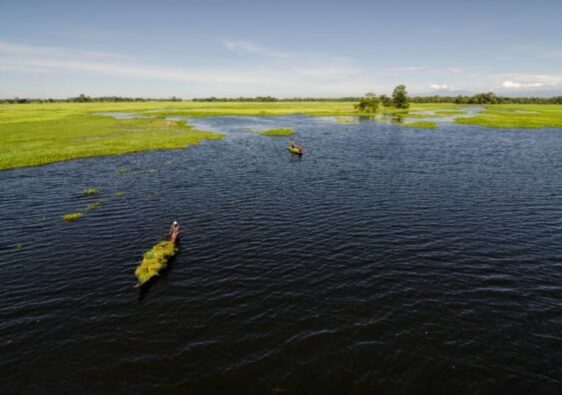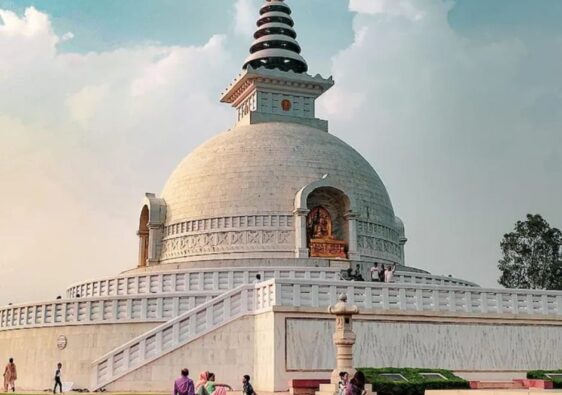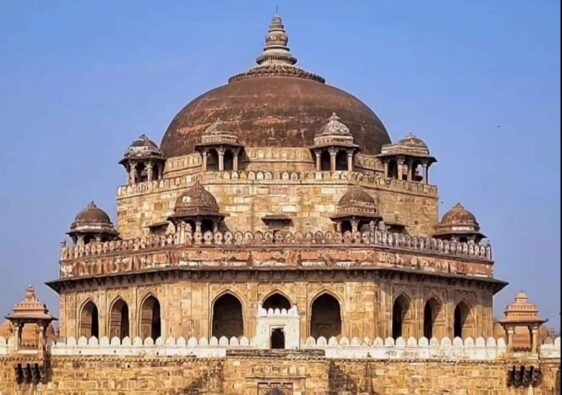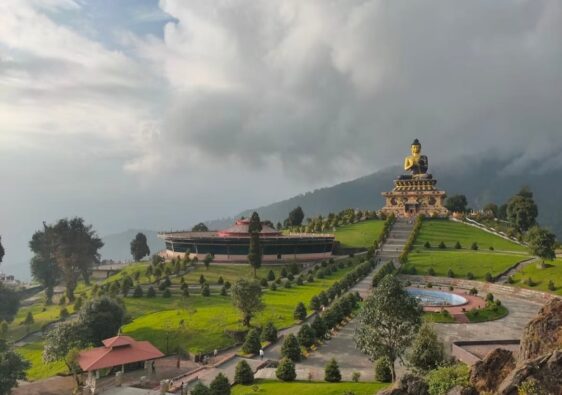Tucked away in the majestic Pir Panjal range of the Himalayas, the Hamta Pass Trek is one of Himachal Pradesh’s best-kept secrets. Stretching between the lush green valleys of Kullu and the stark landscapes of Lahaul, this trek offers an extraordinary contrast in scenery that’s rarely seen in a single journey. At an altitude of 14,100 feet, the pass connects two worlds — the verdant meadows of Jobra and Chika to the arid, rugged beauty of Spiti.

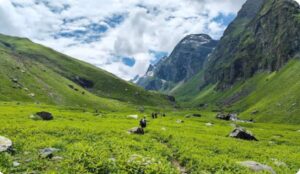

Whether you’re a seasoned trekker or a nature-loving traveler, the Hamta Pass Trek will leave you enchanted with its changing terrains, snow-capped peaks, wildflower-strewn meadows, cascading waterfalls, and the thrill of crossing a high-altitude pass.
Getting There: The Starting Point of Hamta Pass
The trek begins from Manali, a well-known hill station in Himachal Pradesh, which is easily accessible by road from Delhi or Chandigarh. From Manali, a short drive takes you to Jobra, the official starting point of the Hamta Pass Trek.
Best Time to Visit, Hamta Pass
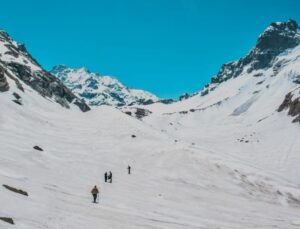
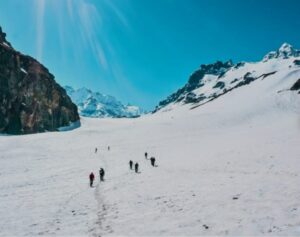
The best time to undertake the Hamta Pass Trek is from mid-June to mid-October. During this period, the trail is open and free of heavy snow, making it accessible and safe for trekkers. July and August offer lush greenery and numerous wildflowers, while September and October give you clearer skies and a peek into Spiti’s barren beauty.
Trek Itinerary Overview
Day 1: Manali to Jobra, Trek to Chika
The adventure kicks off with a scenic drive to Jobra, which sits at around 9,800 feet. The first day involves a gentle trek to Chika, a beautiful campsite surrounded by forests and a bubbling stream. The trail is easy and gives you time to acclimatize and absorb the serene atmosphere.
Day 2: Chika to Balu Ka Ghera
The second day takes you deeper into the valley. You’ll pass through dense forests, cross wooden bridges, and walk along the Rani Nallah. The highlight of the day is reaching Balu Ka Ghera, a campsite located near a riverbed, often dotted with herds of sheep. The area is named after the “bed of sand” (Balu), and it’s the last grassy stretch before the ascent to the pass.
Day 3: Balu Ka Ghera to Hamta Pass and down to Siagoru
This is the most challenging and exciting day. You begin early to cross Hamta Pass, which lies at a height of 14,100 feet. The climb is steep, but every step rewards you with panoramic views of snow-covered peaks and vast valleys. The moment you reach the top of the pass is truly magical — to one side lies the green Kullu Valley, and on the other, the dry and dramatic Lahaul region.
The descent to Siagoru is steep but offers mesmerizing views. Siagoru itself is a serene campsite flanked by rocky terrain and occasional snow patches.
Day 4: Siagoru to Chatru and Drive to Chandratal (Optional)
The final trekking leg leads you to Chatru, a small settlement where roads reconnect you to civilization. If the weather permits and roads are open, a drive to Chandratal Lake (the Moon Lake) is a must. The crescent-shaped lake sits at 14,000 feet and shines like a jewel amidst the stark desert-like surroundings of Spiti.
Day 5: Return to Manali
From Chatru, you drive back to Manali via Rohtang Pass . The return journey is a treat in itself, with dramatic landscapes and snow walls making it an unforgettable ride.
Why Choose the Hamta Pass Trek?
1. Diverse Landscapes
From alpine forests and flower-covered meadows to glaciers and barren mountain deserts, the Hamta Pass Trek has it all. It feels like walking through multiple worlds in a matter of days.
2. Photography Paradise
If you’re a shutterbug or an Instagram enthusiast, you’re in for a treat. The changing colors, dramatic skies, and surreal landscapes make every frame picture-perfect.
3. Adventure Without Extremes
While the trek involves high altitudes and snow, it’s not overly risky. The trek is managed well by multiple trekking companies, and the route is popular enough to ensure safety without being too crowded.
Things to Keep in Mind
- Fitness Preparation: Though the trek is moderate, basic fitness is essential. Prepare with cardio exercises, hiking practice, and stamina-building routines at least a month before.
- Altitude Sickness: AMS (Acute Mountain Sickness) is a possibility. Acclimatization days and staying hydrated help significantly.
- What to Pack: Warm layers, trekking shoes, rain gear, sunscreen, a good backpack, and basic medical supplies are essential.
- Guided or Solo?: While experienced trekkers might go solo, most people prefer going with an organized trekking group for safety, logistics, and local guidance.
